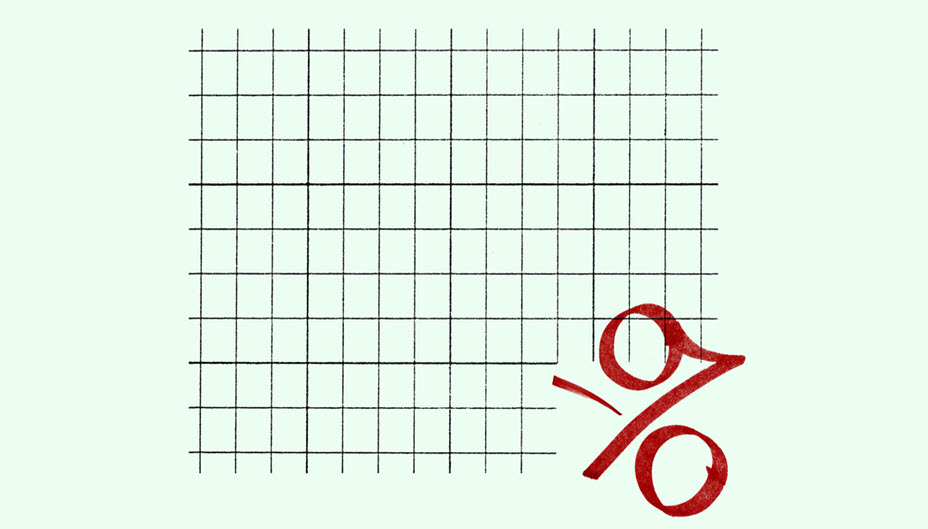What Low and Negative Interest Rates Mean for Investors
Written by The Content Team
Published on January 28, 2020
minute read
Share:
Interest rates — low interest rates in particular — are expected to continue to be a major theme in 2020. What does that mean for investors?
In a recent research paper, RBC Global Asset Management Chief Economist Eric Lascelles broke down why rates are so low, what negative rates mean and what the future rate environment could look like.
The basics
One of the basic rules of finance is that borrowers pay for the privilege of borrowing. That cost is the interest rate, and it's a familiar concept for anyone with a credit card or a mortgage. Now, borrowers and investors are facing ultra-low, and in some cases negative, interest rates.
Currently, negative interest rates are largely confined to the bond market, though as Lascelles notes, the Eurozone and Japanese central bank rates are in negative territory.
With negative-rate bonds, investors who buy and hold them to maturity will receive less money back than they originally put in. Who would do that? Well, as Lascelles points out more fully in the Economic Compass: A primer on low and negative interest rates report, some investors have been doing so in essence for years. He notes that a bond yield of 1 per cent, 2 per cent and possibly 3 per cent — depending on one's tax rate — would pay out a negative coupon after taking into account taxes and inflation.
On the other hand, borrowers in a negative-rate environment — in this case, mostly governments — can basically borrow money for free, or even get paid to take out a loan.
Why are interest rates so low?
For the past decade, interest rates around the world have been at historic lows. There are several reasons for this, Lascelles points out, including slow economic growth, low inflation, aging Baby Boomers in many countries, and high demand for government securities. Central banks have been buying bonds to keep their own interest rates low, and some foreign banks invest in U.S. Treasuries as a safety net. Some organizations, such as large commercial banks or institutional investors, are also often mandated to keep some of their reserves in safer and more easily tradeable investments, for which government bonds fit the bill.
Market implications for investors
"Through both an economic and an investment lens, the world is a more fragile place when interest rates are extremely low," writes Lascelles in the report.
As one would expect, returns from fixed-income investments are limited in a low or negative rate environment, which Lascelles says can push investors to take on more risk in the hopes of higher reward.
"This quest for yield results in return-sensitive investors crowding into riskier asset classes, increasing their valuations," he says.
It's not all negative, he points out. Low-cost borrowing can be a positive if it drives economic growth.
"First and foremost, low interest rates help to boost short-term economic growth as businesses and households are encouraged to borrow and spend more, and discouraged from saving. This remains the primary effect," Lascelles says. However, he says headwinds begin to build as lengthy periods of ultra-low rates persist, leading to the opposite effect — people wanting to save more.
How long will negative rates last?
Lascelles believes the justifications for low yields are likely to persist in some form for years. "Inflation has seemingly been tamed; demographics constrain the rate of economic growth; the shortage of safe assets will likely persist; and so on," he says.
"Thus, whether interest rates remain negative or not, they will probably remain quite low for many years to come," he adds.
RBC Direct Investing Inc., RBC Global Asset Management Inc. and Royal Bank of Canada are separate corporate entities which are affiliated. RBC Direct Investing Inc. is a wholly owned subsidiary of Royal Bank of Canada and is a Member of the Investment Industry Regulatory Organization of Canada and the Canadian Investor Protection Fund. Royal Bank of Canada and certain of its issuers are related to RBC Direct Investing Inc. RBC Direct Investing Inc. does not provide investment advice or recommendations regarding the purchase or sale of any securities. Investors are responsible for their own investment decisions. RBC Direct Investing is a business name used by RBC Direct Investing Inc. ® / ™ Trademark(s) of Royal Bank of Canada. RBC and Royal Bank are registered trademarks of Royal Bank of Canada. Used under licence. © Royal Bank of Canada 2020. All rights reserved.
The views and opinions expressed in this publication are for your general interest and do not necessarily reflect the views and opinions of RBC Direct Investing. Furthermore, the products, services and securities referred to in this publication are only available in Canada and other jurisdictions where they may be legally offered for sale. If you are not currently resident of Canada, you should not access the information available on the RBC Direct Investing website.
Explore More

5 Ways to Get More Out of Your RESP
How can you make the most of this investment vehicle? We explain.
minute read

There's an ETF for That!
Find out more about the options that are out there
minute read

ETF Trends from the RBC Capital Markets Trading Floor – May 2025
Here’s what we saw on the trading floor in May 2025
minute read
Inspired Investor brings you personal stories, timely information and expert insights to empower your investment decisions. Visit About Us to find out more.







